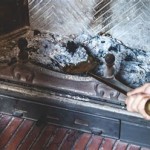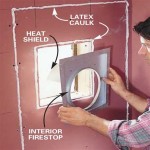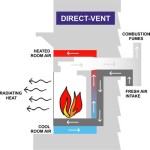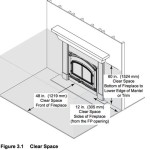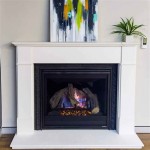Menards Fireplace Inserts: A Comprehensive Guide
Fireplace inserts offer a practical and efficient way to improve the functionality and aesthetics of an existing fireplace. Menards, a prominent home improvement retailer, provides a selection of fireplace inserts designed to cater to various needs and preferences. This article explores different types of fireplace inserts available at Menards, their benefits, key considerations when choosing an insert, and the installation process.
A fireplace insert is essentially a self-contained heating unit designed to fit inside an existing fireplace. Unlike traditional open fireplaces, which are notoriously inefficient – often losing more heat than they generate – fireplace inserts are engineered for optimal heat output and fuel efficiency. They also offer enhanced safety features, significantly reducing the risk of chimney fires and carbon monoxide poisoning when properly installed and maintained.
Types of Fireplace Inserts Available at Menards
Menards offers a range of fireplace inserts categorized primarily by fuel type. The main categories include wood, gas, and electric inserts. Each type possesses unique characteristics in terms of heating capacity, fuel efficiency, maintenance requirements, and installation complexity.
Wood-Burning Fireplace Inserts: Wood-burning inserts are a popular choice for homeowners seeking a traditional fireplace experience. They burn seasoned firewood, providing a radiant and convective heat source. Modern wood-burning inserts are designed with advanced combustion technology to maximize heat output while minimizing emissions. They often feature airtight construction, catalytic or non-catalytic combustors, and air wash systems to keep the glass door clean. The BTU (British Thermal Unit) output of wood-burning inserts varies widely depending on the model and size. However, they generally offer substantial heating capacity suitable for warming large living spaces.
Gas Fireplace Inserts: Gas fireplace inserts offer convenience and ease of use. They burn natural gas or propane and can be easily controlled with a thermostat or remote control. Gas inserts provide instant heat and maintain a consistent temperature. They are available in various styles, including traditional log sets and contemporary glass bead designs. Gas inserts are also known for their clean-burning operation, producing minimal ash and requiring less frequent cleaning than wood-burning models. Venting options for gas inserts include direct vent, which requires an external vent pipe, and vent-free, which do not require a vent pipe but may have limitations in certain jurisdictions.
Electric Fireplace Inserts: Electric fireplace inserts are the simplest to install and operate. They plug into a standard electrical outlet and produce heat through electric coils. Electric inserts offer the ambiance of a fireplace without the need for fuel or venting. They are a safe and convenient option for apartments, condos, and homes without existing fireplaces. Electric inserts often feature realistic flame effects and adjustable heat settings. They are also relatively energy-efficient, allowing homeowners to control their heating costs effectively.
Key Considerations When Choosing a Fireplace Insert
Selecting the right fireplace insert involves considering several factors to ensure it meets your specific heating needs and complements your home's aesthetic. Factors to consider include the size of the area you want to heat, the type of fuel you prefer, your budget, and any specific building codes or regulations in your area.
Sizing and BTU Output: Determining the appropriate BTU output is crucial for efficient heating. The size of the room or area you intend to heat should be considered. A larger space will require a higher BTU output to maintain a comfortable temperature. Menards provides BTU ratings for each fireplace insert, allowing you to compare models and select the one that best suits your heating needs. It is advisable to consult with a professional to assess your specific heating requirements accurately.
Fuel Type and Cost: The cost of fuel can vary significantly depending on the type of insert. Wood-burning inserts require a reliable supply of seasoned firewood, which can involve purchasing or harvesting wood. Gas inserts rely on natural gas or propane, with prices subject to market fluctuations. Electric inserts utilize electricity, with operating costs dependent on electricity rates. It's important to factor in fuel costs when comparing different types of inserts.
Venting Requirements: Venting requirements vary depending on the type of insert. Wood-burning and gas inserts typically require venting to safely exhaust combustion byproducts. Direct vent gas inserts use a sealed system that draws air from outside and exhausts flue gases directly outside. Vent-free gas inserts do not require venting but may be subject to restrictions due to concerns about indoor air quality. Electric inserts do not require venting as they do not produce combustion byproducts.
Aesthetics and Style: Fireplace inserts are available in various styles and finishes to complement your home's decor. Options range from traditional cast iron designs to contemporary stainless steel models. Consider the overall style of your room and choose an insert that enhances the aesthetic appeal of your fireplace. Menards offers a wide selection of inserts with different design elements, allowing you to find the perfect match for your style.
Installation of Fireplace Inserts
Proper installation is essential for the safe and efficient operation of a fireplace insert. It is strongly recommended to hire a qualified professional to install your insert, ensuring compliance with local building codes and manufacturer's instructions. Improper installation can lead to safety hazards and void warranties.
Preparation and Inspection: Before installing an insert, the existing fireplace should be thoroughly inspected to ensure it is in good condition. The chimney should be cleaned and inspected for any cracks or damage. Any necessary repairs should be completed before proceeding with the installation. The fireplace opening should also be measured to ensure the insert will fit properly.
Installation Process: The installation process varies depending on the type of insert. Wood-burning and gas inserts typically require connecting to a chimney liner to safely vent combustion gases. The insert is then carefully placed into the fireplace opening and secured in place. Gas inserts require connecting to a gas line by a qualified technician. Electric inserts are the simplest to install, requiring only plugging into an electrical outlet.
Safety Precautions: During installation, it is important to follow all safety precautions outlined in the manufacturer's instructions. Wear appropriate safety gear, such as gloves and eye protection. Ensure proper ventilation to prevent the accumulation of harmful gases. After installation, test the insert to ensure it is operating correctly. Regularly inspect the insert and chimney for any signs of damage or malfunction.
Menards provides a range of resources to assist with the selection and installation of fireplace inserts, including product information, installation guides, and customer support. Consulting with a professional is highly recommended to ensure the proper selection and installation of your fireplace insert, maximizing its efficiency and safety.

Greentouch Home Waterford Electric Fireplace Entertainment Center At Menards Assembly

Parkview 60in Matte Black Fireplace Whalen Furniture

Greentouch Home Fireplaces Menards

ᑕ❶ᑐ Magikflame Fireplace Insert Vs Menards Tv Stand

Heartland Electric Stove Heater Menards

Farmstead 60in Dark Pine Electric Fireplace Entertainment Center Whalen Furniture

China Quality Craft Modern Menards Electric Fireplace Factory And Manufacturers Artisan Works

China Quality Craft Modern Menards Electric Fireplace Factory And Manufacturers Artisan Works

Ameriwood Home 18 In W Black Fan Forced Electric Fireplace The Fireplaces Department At Com

Fireplace Insert Awfco Catalog Site
Related Posts

